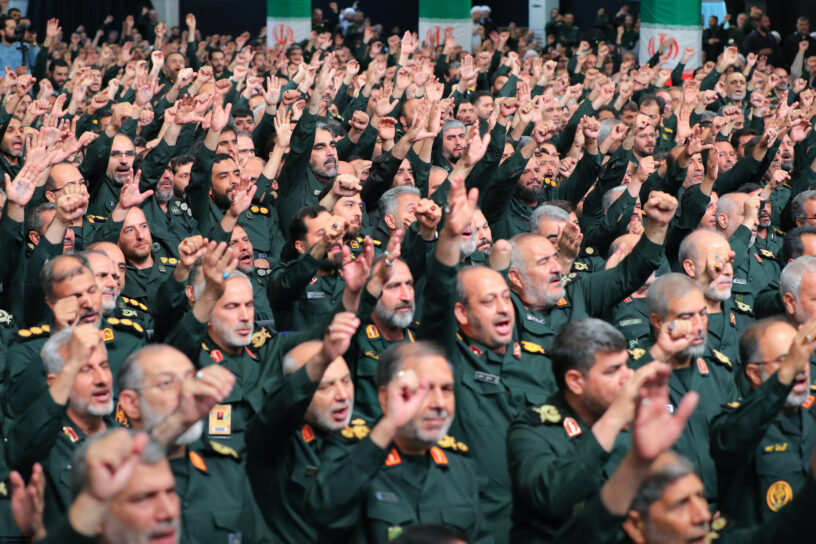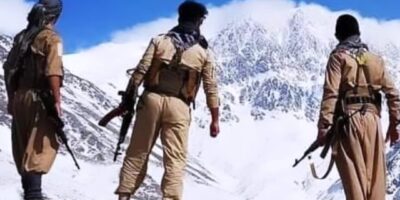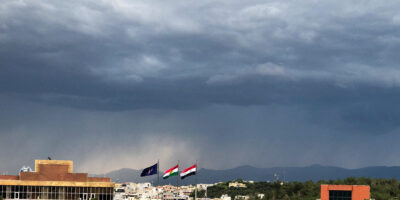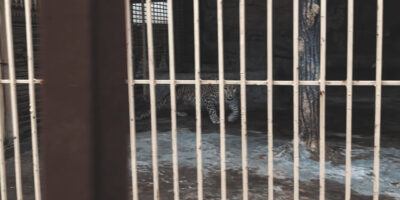A month ahead of the anniversary of the largest threat the Islamic Republic has seen to its regime, Iranian authorities are trying to instill fear in the population by carrying out mass executions, sometimes publicly, arresting activists, lawyers, students, and ordinary citizens, and using threats and torture to deter the public from mounting another challenge to its oppressive rule.
Both of the country’s main intelligence services – the Islamic Revolutionary Guard Corps (IRGC) intelligence and the ministry of intelligence – appear to be panicking and are rounding up a large number of activists and family members of those killed during last year’s protest.
On September 16 last year, a young Kurdish woman named Jina Amini, also known as Mahsa, died while in the custody of Tehran’s morality police after she was reportedly picked up for wearing her hijab headscarf loosely, contrary to the strict laws that govern women’s dress.
The torture in custody of Amini and the photo of her lifeless body on a hospital bed in Tehran, followed by the lies that officials spewed, ignited the simmering anger that many Iranians feel towards the oppressive rule of the regime and its morality police, as well as the economic mismanagement that has brought the overwhelming majority of the population to its knees.
Her death sparked nationwide protests, often led by women chanting “Jin Jiyan Azadi” (Woman Life Freedom). The people were united in their grief and anger towards the regime. This scared the ayatollahs who have spent the last four and a half decades working to divide the Iranian people and in order to rule over them.
“The punishment will be much more severe this time,” one ministry of intelligence interrogator recently told an activist in the Kurdish city of Sanandaj.
“Almost all the activists have been warned to stay away from provoking or participating in any protest,” the activist, who wants to stay anonymous, said from the city.
Security forces, including the IRGC, the ministry of intelligence, riot police, and volunteer Basij militia detained over twenty thousand people during months of protests last year. Many were tortured and several people died during interrogation. The severest punishments were dished out to lesser known protesters while well known activists were treated with more leniency. But this time, agents of the ministry of intelligence and IRGC are warning activists that the gloves are off.
The supreme leader Ali Khamenei, who is the ultimate decision maker in the country, summoned every single IRGC commander to Tehran this past week to praise their efforts in cracking down on the protests and to give them carte blanche to do as they please if another wave of demonstrations breaks out.
“One of the most important things that the IRGC has done from the first day until today is to face the crises created by the enemy,” Khamenei told the commanders, advising them to be strong. “When the enemy feels that you are weak, he is encouraged to attack. When he feels that you are strong, if he intends to attack, he will have to reconsider.”
According to the activist in Sanandaj, the number of plain clothes officers monitoring activists and patrolling the streets has increased dramatically. “They are using fear to scare people off,” he said. “There is certainly fear in the air, but no one knows what is going to happen on September 16.”
Authorities even detained a three-year-old child. Actor Mehdi Etemad Saeed was detained in mid-June and last week authorities raided their house and detained his wife and young daughter.
Those who publicised the protests inside the country or wrote about the victims were arrested. Three journalists who reported about the killing of Jina Amini or spoke to her family are in detention.
The tentacles of the IRGC and the regime also reach outside its borders where activists and journalists are threatened with abduction or detention of their families back home.
While the regime uses all its might inside the country to kill and frighten the population, it knows that the Iranian diaspora and media outlets play a critical role in publicizing people’s anger with the regime to the outside world. This frightens the ayatollahs who use all tactics to try and silence the diaspora.
Iran is one of the world’s worst offenders when it comes to use of the death penalty and the regime has been on steroids this year, executing at least 474 people in the first seven months.
During last year’s demonstrations, security forces killed at least 530 protesters and bystanders and this year every single act of commemoration of these individuals scattered across Iran will present a challenge for the security forces.
A disproportionate number of those executed are from the Baluchi areas in southeast Iran. Baluchistan has been perhaps the most restive part of the country where thousands of people have come out every Friday and protested against the regime.
Kurds, another beleaguered minority, have also led the protests and borne the brunt of the regime’s brutal crackdown.
“My family have been under pressure for the past years, but since last year the pressure has been enormous every time something happens in the Kurdish area,” said Jila Mostajer, an activist with Hengaw human rights organisation. “They have been mistreated. They have been forced to make video confessions. My brother has been forced under duress to make a number of video confessions or a scripted text or he would be taken to prison.”
Mostajer, who comes from the city of Saqez, the birthplace of Jina Amini, said the family and her human rights organisation are both accused of working for Israel, Iran’s archenemy.
“I believe all the pressure is to prevent the revolution of Jina, the #WomanLifeFreedom movement from growing, and for the people to give up under pressure,” Mostajer said.
Despite the heavy handed approach by the authorities, an increasing number of Iranian women including artists, actresses, students and ordinary citizens across the country are defying the regime by refusing to wear the hijab. In most cases, this leads to confrontation between vigilantes, police and the women. Regime agents and vigilantes have physically attacked women, dragged them to the morality police, or even emptied buckets of yogurt over them. Many women who refuse to abide by the compulsory hijab have been fired from their jobs, banned from university, and detained. But the resistance continues on a daily basis.
If these daily confrontations between ordinary Iranian women and the security forces are anything to go by as the first anniversary of the protest nears, the public will continue their defiance and will shake off the fear that the regime is trying to inject into society.




